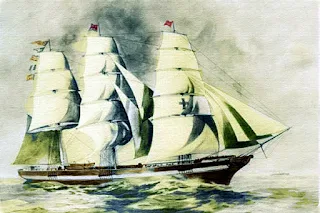 |
| Pictured: Ted Cruz haunts Bernie Sanders dreams. |
That's also how you have to evaluate the tax plans of the Presidential candidates.
Vox.com has a great tool to see how you'd fare under each candidates proposed tax changes. Plug in your income, marital status and the number of kids and you can get an idea of whether your taxes will go up or down under President Sanders vs President Cruz.
I put my numbers in and I'd have to pay a big increase in taxes under President Sanders and I'd get a huge tax cut under Cruz and Trump.
However, you have to keep reading to get the rest of the story.
It's one thing to know how your taxes will change, but you can't view it in a vacuum. What the federal government does can affect your bottom line, too.
For example, Bernie Sanders's plan would raise taxes on everyone, but it would also pay for health care, education, and other programs that you would no longer have to pay for. And it goes the other way, too. If Donald Trump's tax plan was implemented, everyone would get a tax cut, but it also means government services would be cut, so you would have to pay for them yourself.So you have to look at each tax plan in terms of not just how much you would pay, but what you get as well. While there is some disagreement on how much these tax plans will cost, Vox seems to use the conservative estimates for their calculations.
Under Sanders my tax bill would jump $12,000 a year -- but that is less than a year of college tuition for one of my two daughters. So that might be worth it if my healthcare insurance bill would go down and tuition would be free at Washington State University. (Sanders Proposal)
Under Clinton my tax bill wouldn't change much -- her tax increases are targeted more at the wealthy than Sanders -- but her promises are more modest. For example only community college would be free. (Clinton Proposal)
Before we go any further, can well all just agree that Republicans can no longer call themselves the fiscally responsible party? Since World War II, economists have found that the economy does better when Democrats are in the White House.
With the exception of George HW Bush, Republican Presidents over the last 50 years always cut taxes and increased spending - which is the same as quitting your job then running up your credit cards. That's not fiscally responsible.
That track record pales when you consider the proposed economic policies of the current GOP candidates.
Needless to say under Trump or Cruz, my taxes would go down according to the calculator, but at what price?
Both their tax proposals would DOUBLE the $9.5 trillion projected federal deficit -- massive cuts to federal spending. (Trump's Plan) (Cruz's Plan)
Yet, both are also proposing big INCREASES in military spending. There's also that wall they are planning to build and an elaborate federal police state to deport millions of illegal immigrants and oppress law abiding Muslim Americans. That's going to cost more than a few pennies too.
Indeed, another Vox story is worth reading to get the full picture. In "We've Lost Sight Of How Wildly Irresponsible the Republican Tax Plans Are," Ezra Klein explains that Trump and Cruz have spun off into the world of fantasy as far as their fiscal policies are concerned.
Marco Rubio, Ted Cruz, and Donald Trump are the top three contenders for the Republican nomination. Rubio has promised tax cuts amounting to $6.8 trillion, Cruz $8.6 trillion, and Trump a whopping $9.5 trillion, according to the Tax Policy Center (and that's not including interest on the debt they would rack up!).
To put that in perspective, the tax cuts George W. Bush proposed during the 2000 campaign were $1.32 trillion — which would be $1.82 trillion in today's dollars. And taxes were higher in 2000 than they are today, and the country was running surpluses rather than deficits.
However, that's not all. Trump's proposed cuts are so big that you could eliminate all military spending -- shut down the Air Force, Navy, Army and Marines -- and still only pay for two-thirds of his tax cut. Don't forget, he's proposed INCREASING military spending.
"There's just no way to reconcile all that," Klein wrote. "Taken together, even the most sympathetic reading of Trump's plan dissolves into incoherence."Required Reading:
How each candidate's tax plan affects you
We've lost sight of how irresponsible republican tax plans are
Why Does Sander's Tax Plan Increase Taxes So Much?
How The Candidate's Tax Will Affect You - In Four Charts
No One Can Agree On How Much Candidates Tax Plans Will Cost
Why the Economy Performs Better Under Democratic Presidents
Five Charts Prove that The Economy is Better Under Democrats




